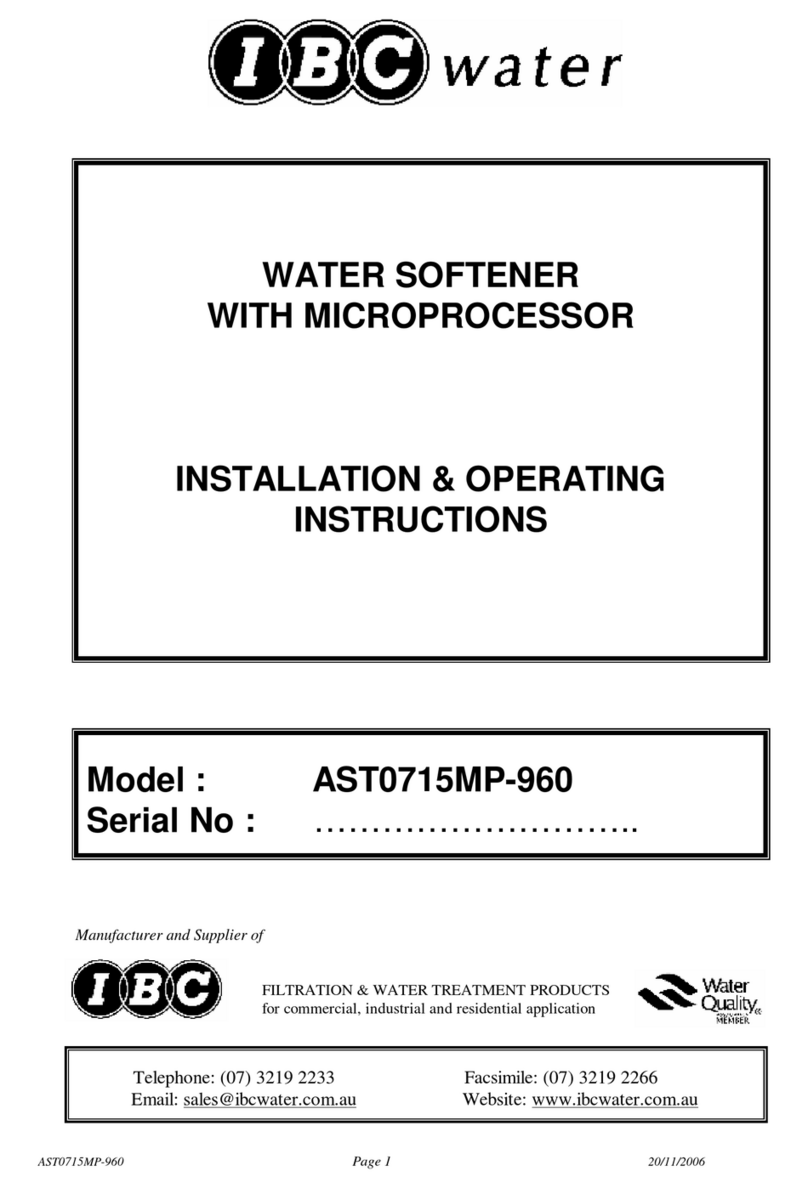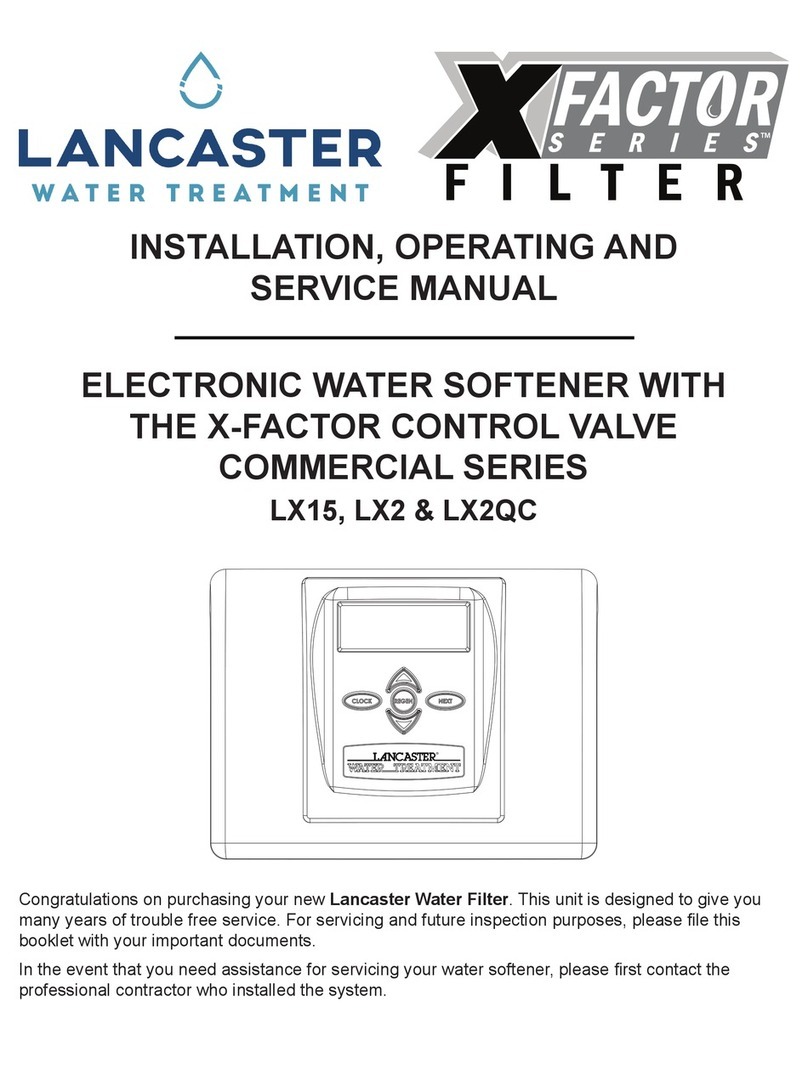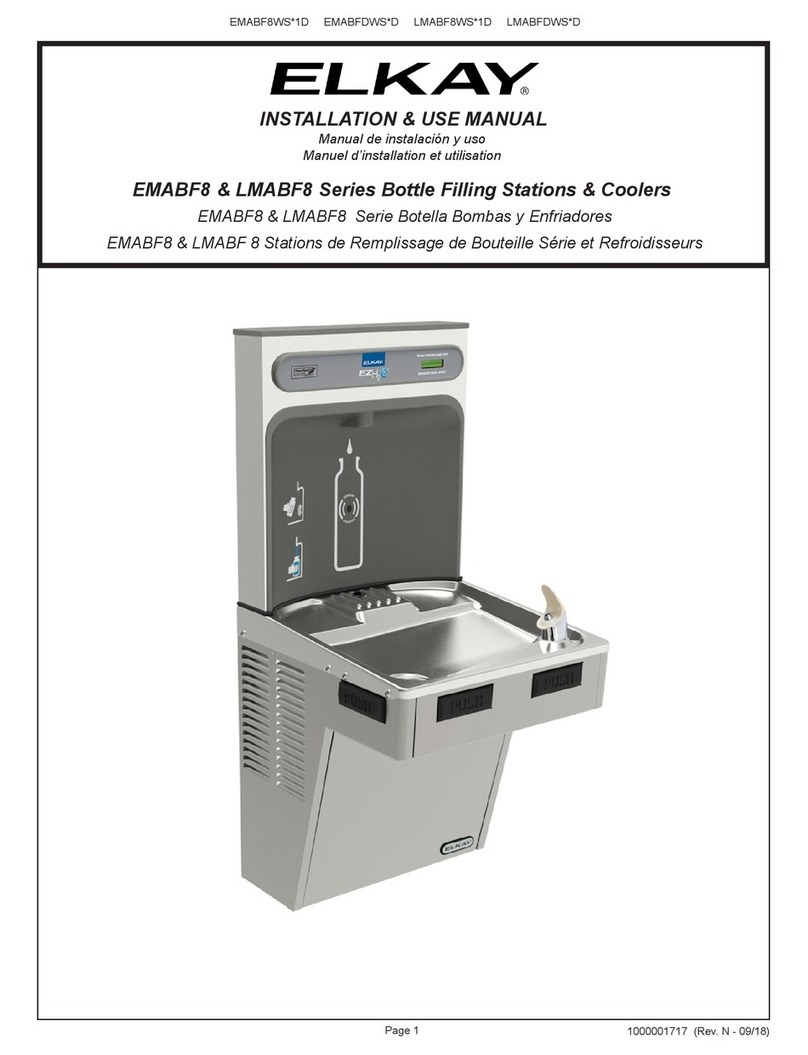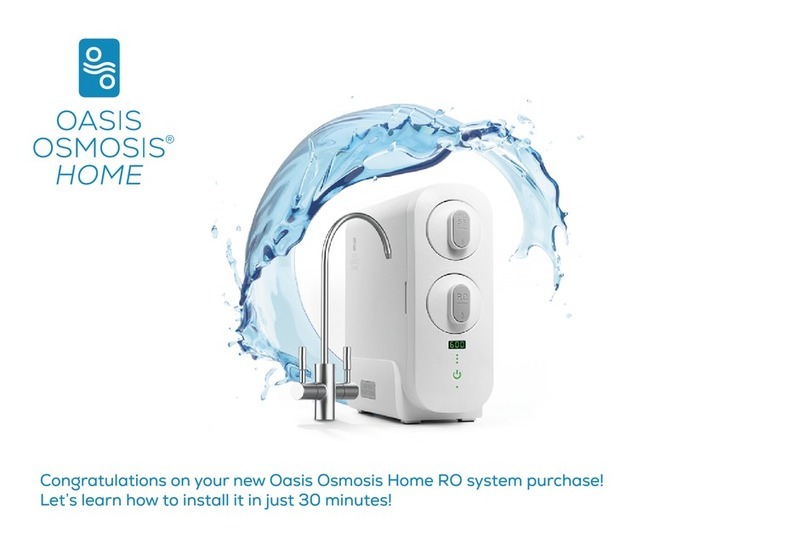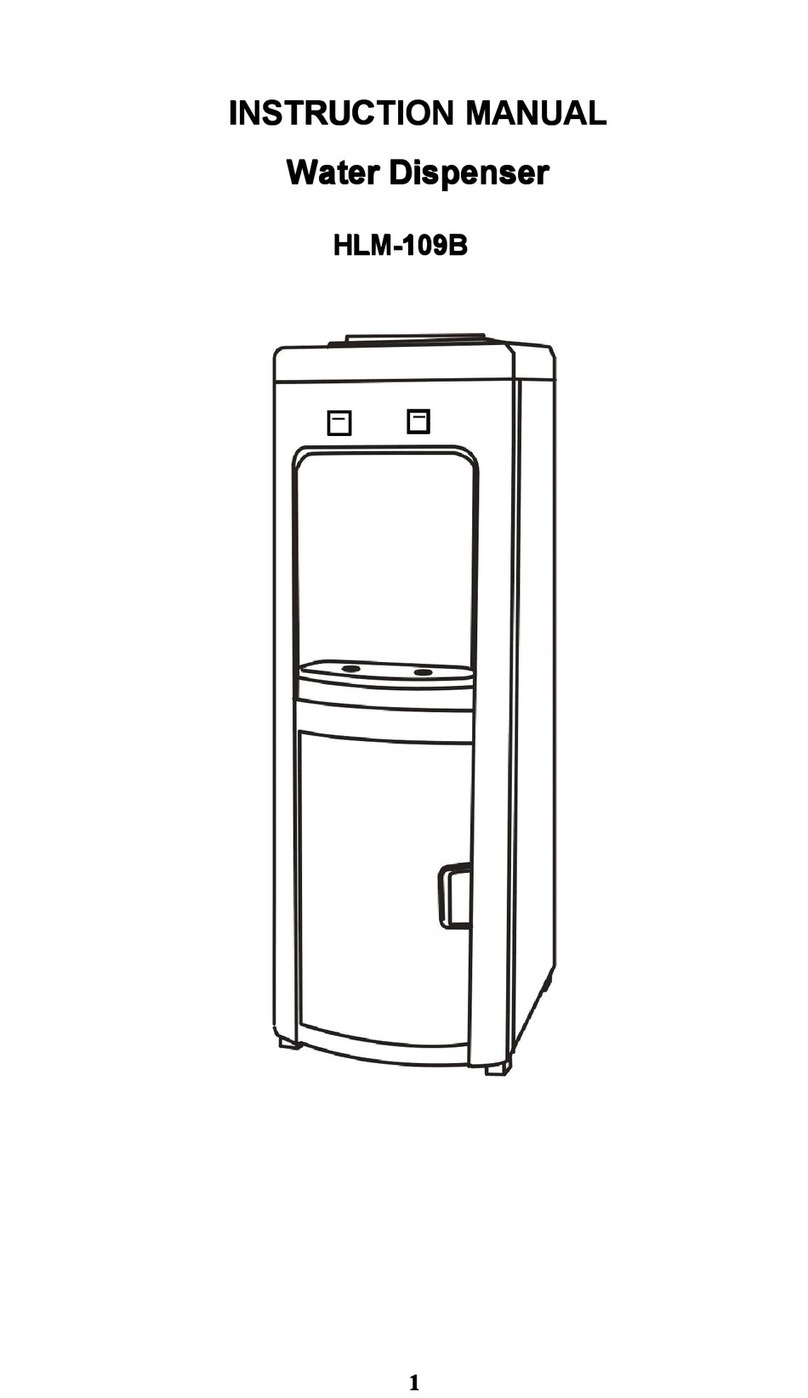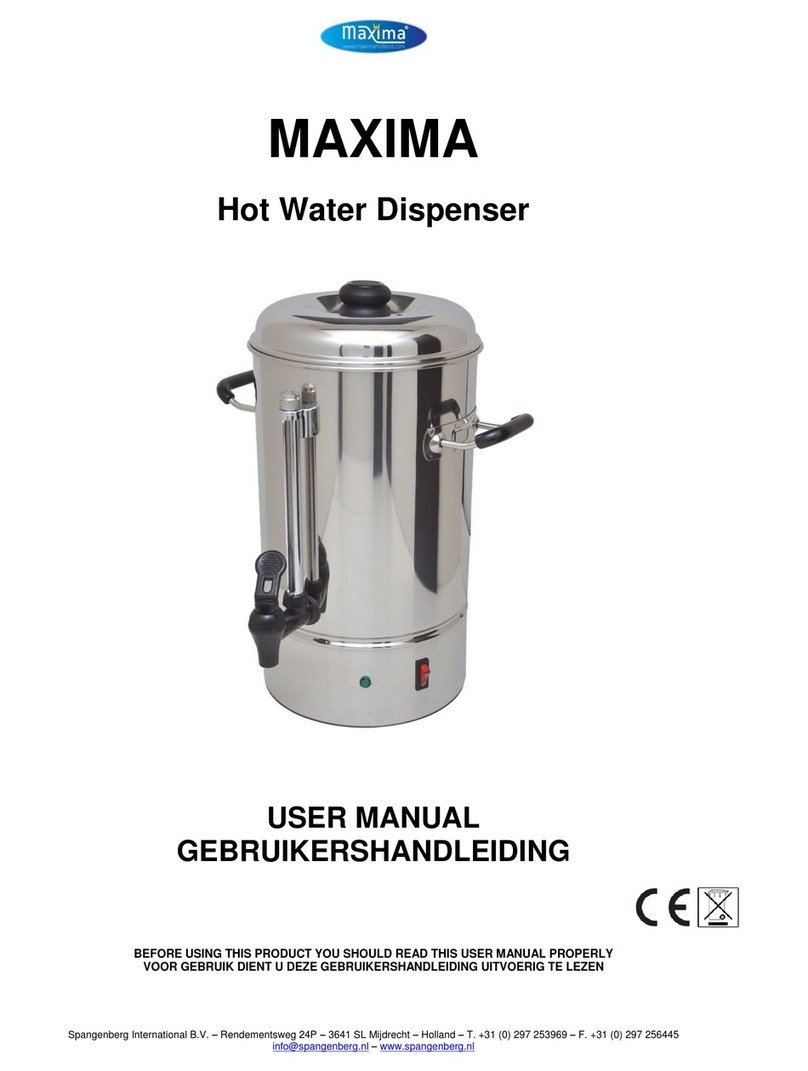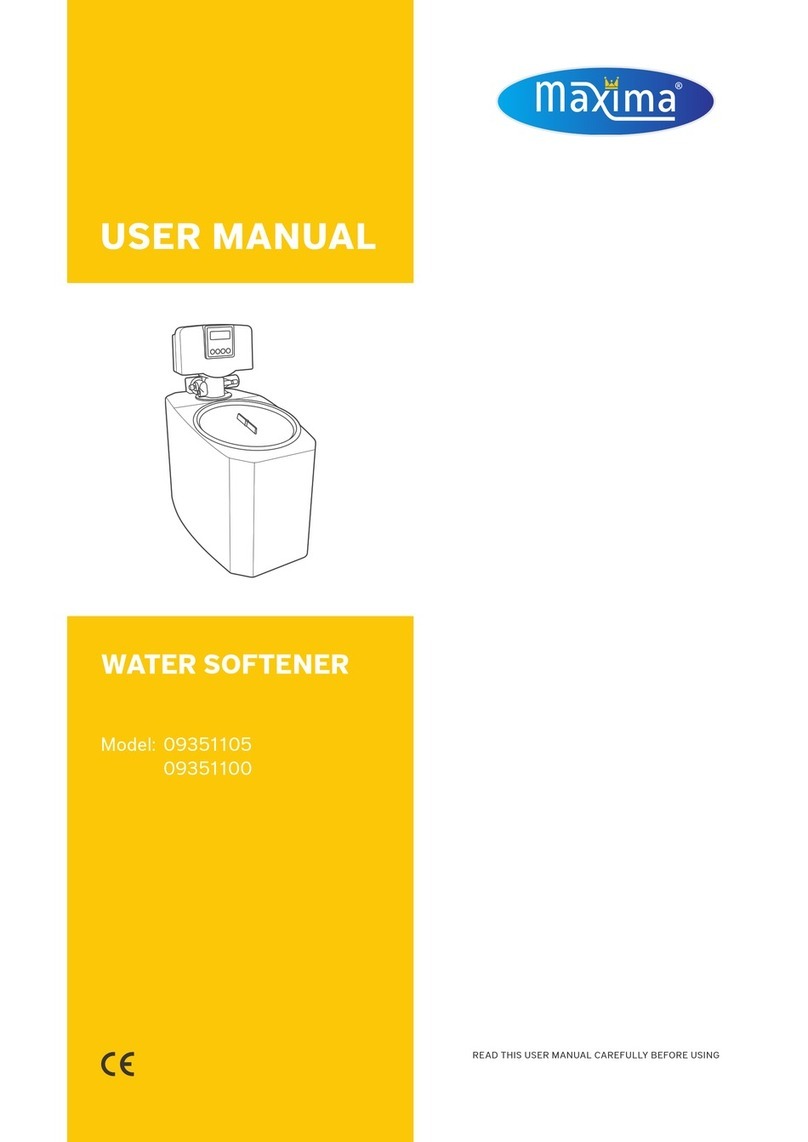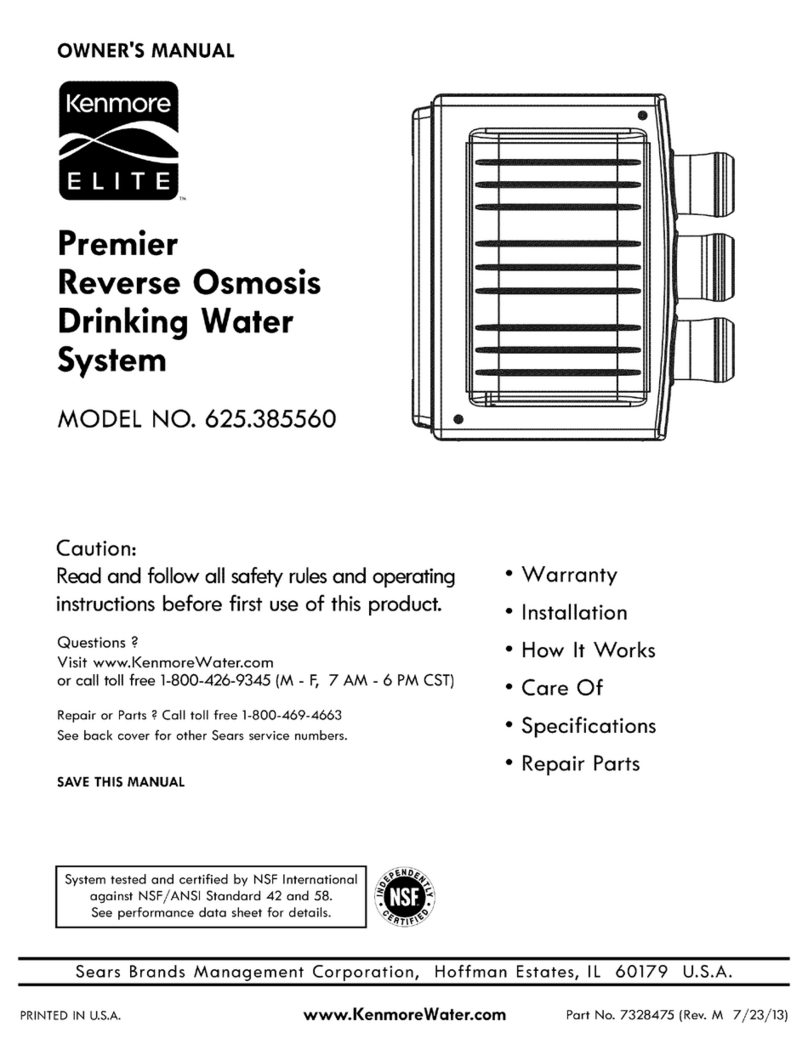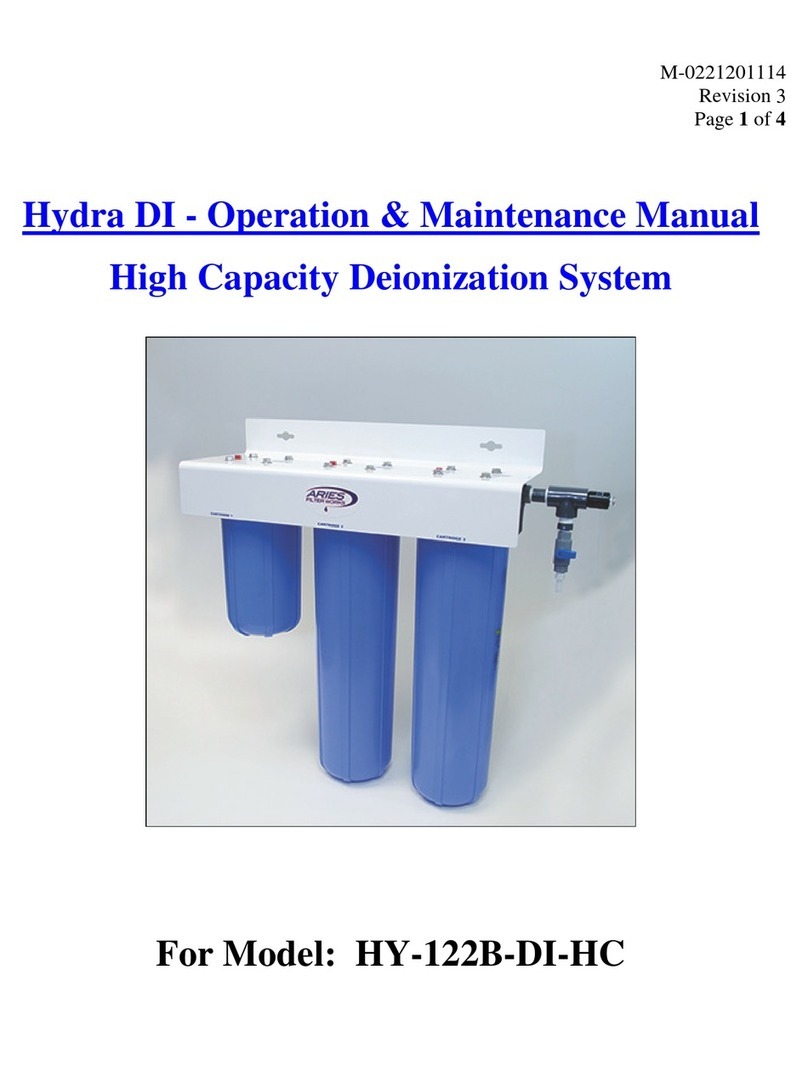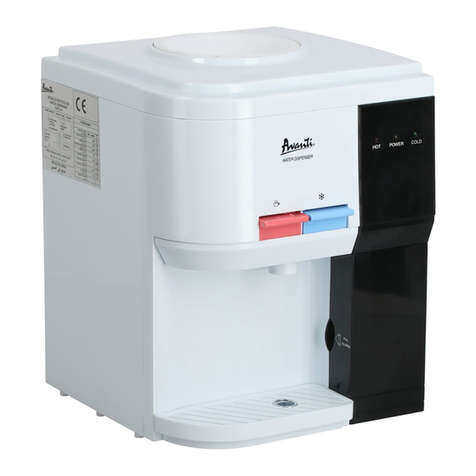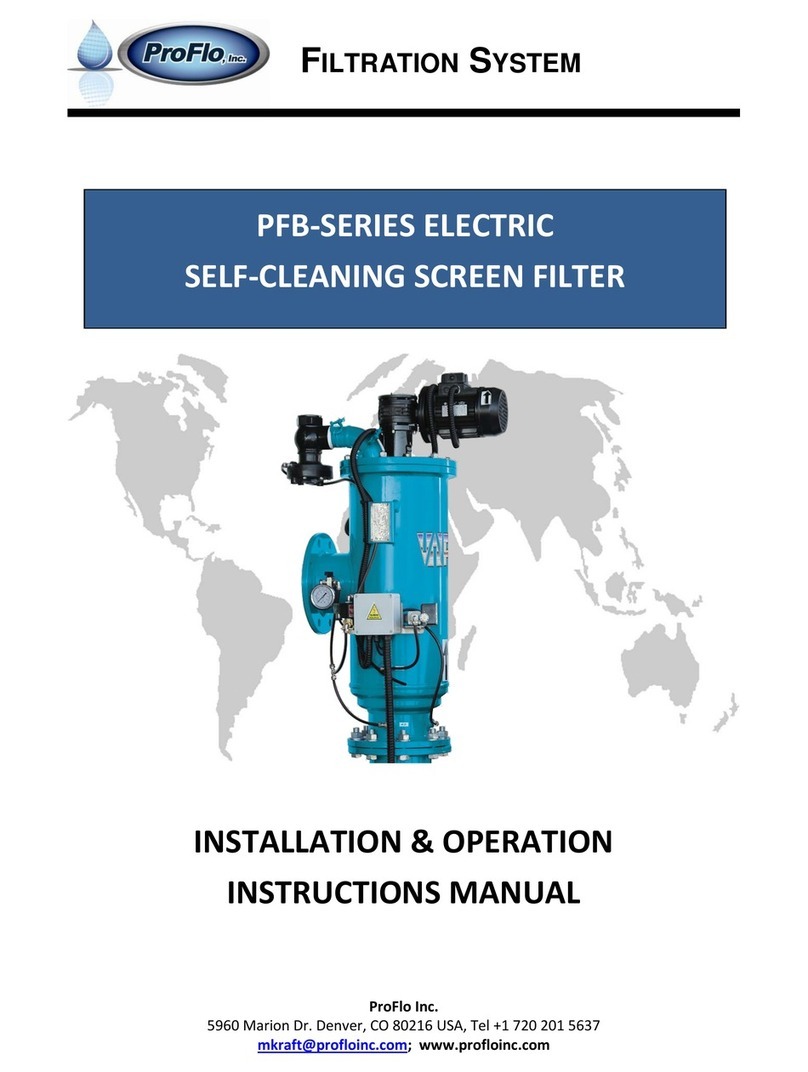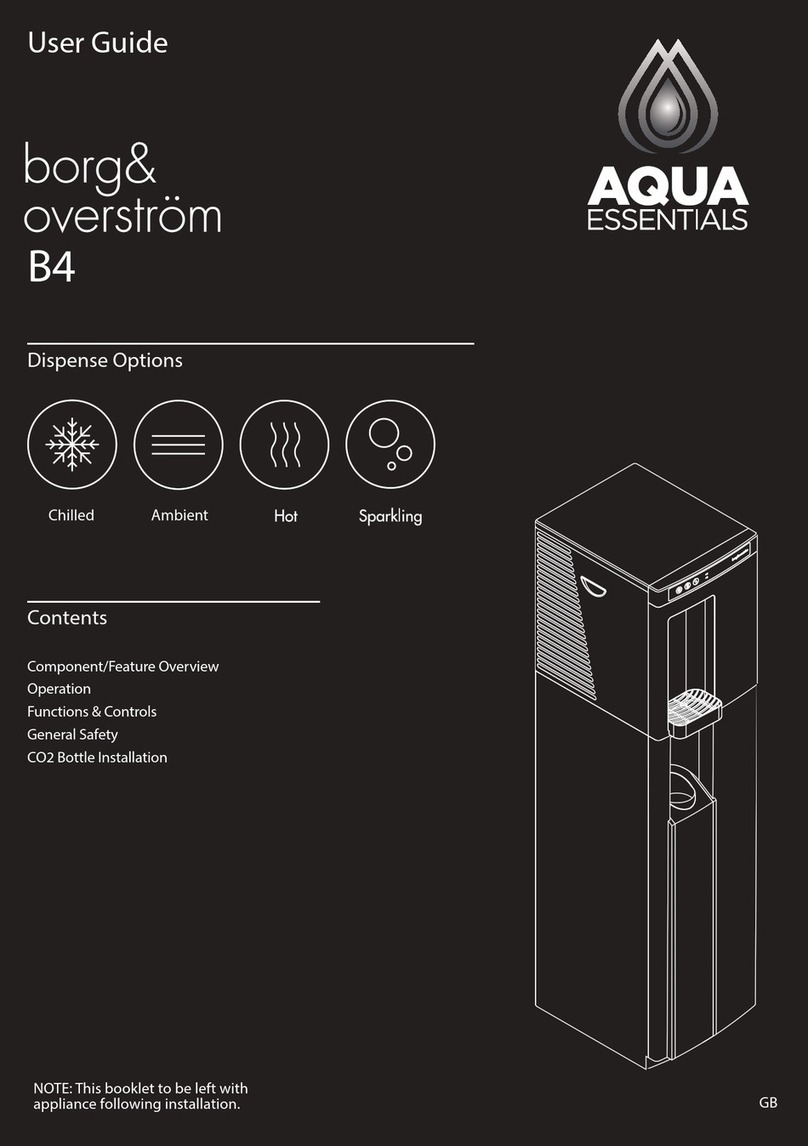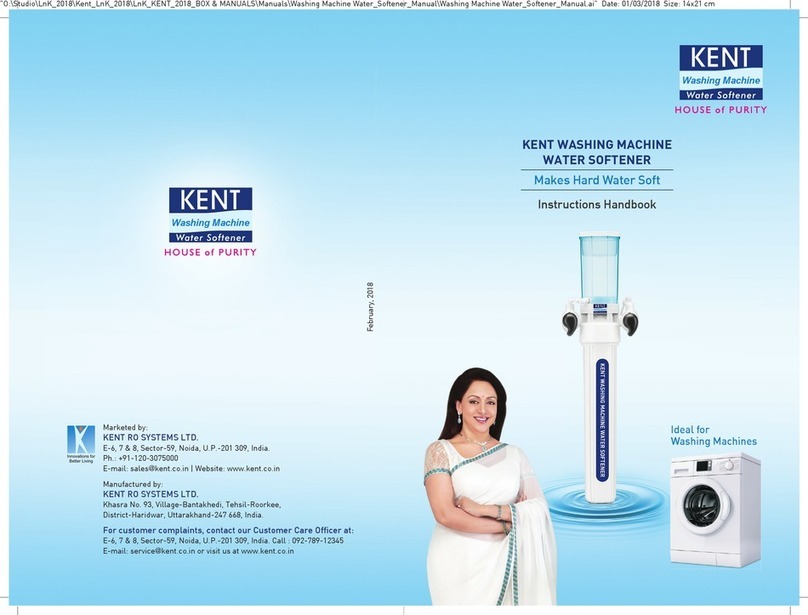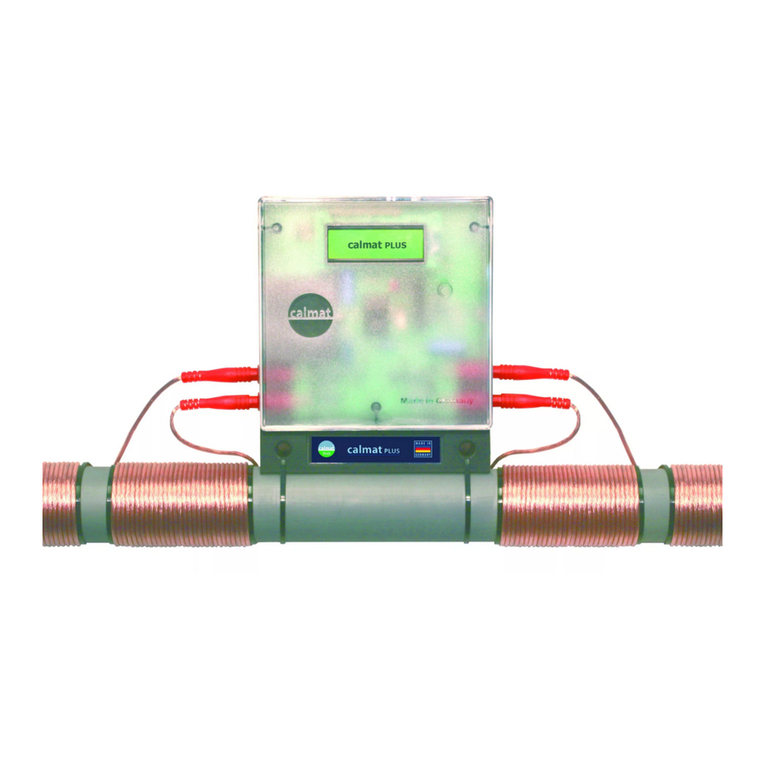
MAINTENANCE
Page 7 EN - English
ROUTINE CHECKS
Regularly, and at least once every 6 months, the user should
perform abasic checkto verifyif the appliance is functioning
correctly, on the basis of the following control points:
1. Check drain outlet; there shouldn’t be any water flow
(unless appliance is in filter flushing position).
2. Checkapplianceandsurroundingarea;thereshouldn’tbe
any water leakages. Shut off the water supply to the
appliance immediately if any sign of leaks is observed.
FILTER FLUSHING
The filter flushing frequency depends on the water
quality and the water consumption. We recommend to
perform filter flushing regularly, at least once every 3
months.
The transparent housing allows the user to easily check
the condition of the filter element; when accumulation of
particles on the filter element starts to become clearly
visible,performing filter flushing is recommended.
When the water flow from a faucet noticeably slows
down, this may be caused by the filter element becoming
clogged. Performing filter flushing is recommended.
If a permanent sewerage connection is not installed,
make sure to use a suitable removable recipient (f.e. a
bucket) for the collection of the rinse water.
Picture 4
1. Turn the drain valve 90° counter clockwise to the open
position; water will start to run fromthedrain outlet.
2. Rotate the grey bottom section of the appliance 3 to 4
turns, to wipe clean the inside of the transparent housing
(by means of the integrated lineair brushes) and to flush
the filter screen.
3. Turn the drain valve 90° clockwise to the closed position.
4. Checkthedrainoutlet;thereshouldn’tbeanywaterflow.
MANUAL FILTER CLEANING
If filter flushing is not sufficient to properly clean the
transparent filter housing and/or filter screen, performing
manual filter cleaning is recommended.
Make sure to shut off the water supply to theappliance,
before you start. If possible put the appliance hydraulically
in bypass.
If a permanent sewerage connection is not installed,
make sure to use a suitable removable recipient (f.e. a
bucket) for the collection of the rinsewater.
A limited amount of water may leakfrom the appliance
during this procedure. Make sure to take the necessary
precautions to prevent damage to the property.
Picture 4&6
1. Turn the drain valve 90° counter clockwise to the open
position; water will start to run from the drain outlet; let
it rununtilit stops.
2. By means of the metal key (included), unscrew the
transparent housing and remove it from the inlet/outlet
manifold.
3. Remove the filter screen fromthe inlet/outlet manifold.
4. Remove the brush cartridge from the transparent
housing.
5. Thoroughly clean all parts; make sure not to damage any
of the o-rings; rinse all parts with hot water.
6. Install the brush cartridge in the transparent housing;
make sure to position it correctly (the square opening in
the bottom of the brush cartridge should fit over the
square edge in the brass bottom section of the
transparent housing); when rotating the grey bottom
section, the brush cartridge should also rotate.
7. Install the filter screen in the transparent housing; make
sure to position it correctly (the 4 ridges on the filter
screen should fit in the 4 grooves in the transparent
housing).
8. Screw the transparent housing on the inlet/outlet
manifold; tighten it by hand.
9. Make sure the drain valve is in closed position, meaning
in the horizontal position.
10. Open the mains water supply.
11. Open a cold treated water faucet nearby the appliance
and let the water run for a minute until all air is purged
and all foreign material that may have resulted from the
installation is washed out; close the tap.
12. Check the appliance and all hydraulic connections for
leaks.
APPEARANCE
Toretaintheappearanceoftheappliance,simplywipeitwith
a damp cloth or clean it with a mild soap solution; never use
abrasive cleaners, ammonia or solvents.
SANITIZING THE APPLIANCE
Whenever polluted water or water of unknown quality
haspassedthroughtheappliance,we strongly recommend
to thoroughly flush the appliance.
This appliance is manufactured from premium quality
material and assembled insafeconditionsto assureit is clean
and sanitary. If installed andservicedcorrectly, this appliance
willnotinfectorcontaminateyourwatersupply.However,as
in any 'device' plumbed-in in your water distribution system,
a proliferation of bacteria is possible, especially in case of
'stagnant water'.
Ifthewatersupplytotheapplianceisdisconnected,orincase
of longer period of non-use of the appliance, we recommend
to thoroughly flush the appliance before putting it into use.
